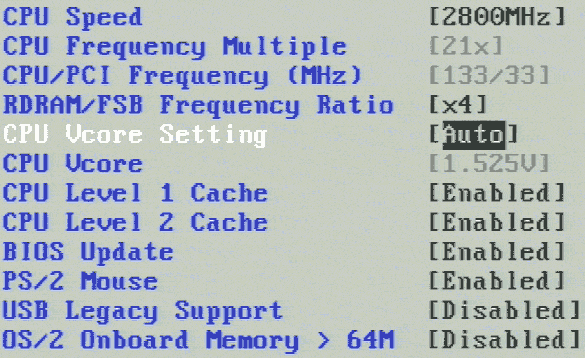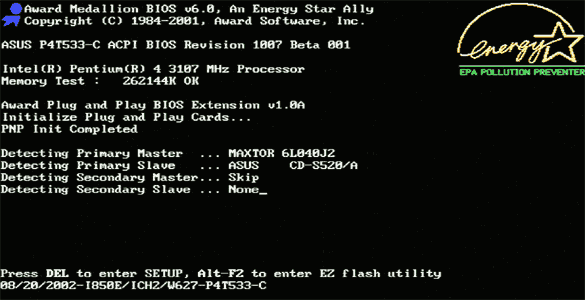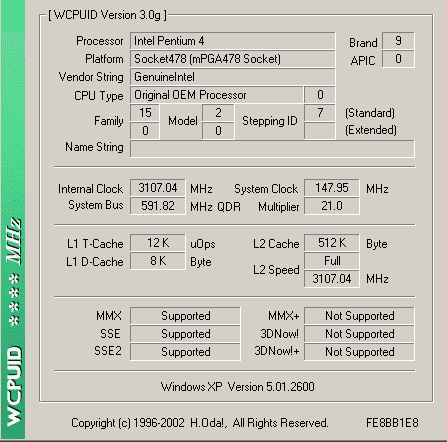Speed Isn't Everything: P4/2800 Meets Athlon XP 2600+
The Limit Approaches: More Voltage For P4/2800

Compared to its lower-clocked variant, the P4/2800 runs with a marginally higher voltage of 1.525 Volt.
With the previous variants of the Pentium 4 (up to 2533 MHz), the core voltage remained constant at 1.500 Volt. It's a different picture with the new CPUs with higher clock speeds: the P4/2800 requires a voltage of 1.525 Volt - that's an increase of 0.025 Volt. This fact alone leads to the conclusion that Intel wants to automatically guarantee better results by increasing the core voltage by 1.6%. It shouldn't be a problem for the motherboards to adapt to this, since the voltage values are contained in the CPU as data, and this is automatically read and adjusted by the motherboard logic.
Optimal For Overclocking: P4/2500 With 100 MHz FSB

It all ends with 3100 MHz: the P4/2800 is not as suitable for overclocking compared to the P4/2500 with 100 MHz FSB.
An important rule for overclocking Intel CPUs is the following: you need a lower FSB clock, plus a high multiplier value, because it's not possible to adjust this factor as you can with all AMD CPUs. The P4/2500 variant, for example, is factory-set to run with 25 x 100 MHz (2500 MHz), and this alone makes it optimal for extreme overclocking.
By contrast, the P4/2666 and P4/2800 don't look too good when it comes to overclocking. Increasing the FSB clock stops at 150 MHz at the latest (based on a motherboard equipped with the Intel 850 chipset and RDRAM). For both CPUs, this means that only 17 MHz is left available for a clock increase. The clock limit of the P4/2800 thus lies at 3150 MHz (150 MHz x 21), or an increase of 12.5%. It's different with the P4/2500 with 100 MHz FSB: by increasing the FSB clock from 100 MHz to 133 MHz, the CPU runs at 3325 MHz (133 MHz x 25) - that's a 33% increase.

The P4/2800 overclocked to 148 MHz FSB. When using conventional cooling, higher clocks are not possible in combination with RDRAM.
Stay on the Cutting Edge
Join the experts who read Tom's Hardware for the inside track on enthusiast PC tech news — and have for over 25 years. We'll send breaking news and in-depth reviews of CPUs, GPUs, AI, maker hardware and more straight to your inbox.
Current page: The Limit Approaches: More Voltage For P4/2800
Prev Page Fleeing To The Front: The New Top Model, Intel P4/2800 Next Page Weak-Chested: P4/2600Most Popular

